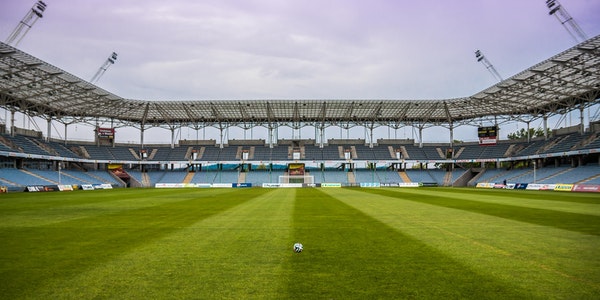(II) Advantages of Data Collection and Analytics
Optimization of Lighting Performance:
Data analytics enable venues to monitor lighting parameters such as brightness, color rendering, and uniformity to ensure optimal performance and visibility for players, officials, and spectators.
Insights from analytics inform adjustments to lighting schedules, intensity levels, and color temperatures to meet specific requirements for different sports events and activities.
Energy Efficiency and Cost Savings:
By analyzing energy usage patterns, venues can identify opportunities for energy conservation, demand management, and peak load reduction.
Predictive analytics help optimize lighting schedules, dimming strategies, and daylight harvesting techniques to minimize energy consumption and operating costs without compromising illumination quality.
Operational Insights and Maintenance Optimization:
Data analytics provide visibility into lighting system health, reliability, and maintenance needs, enabling proactive troubleshooting, predictive maintenance, and asset management.
Performance metrics and trend analysis inform decisions on equipment upgrades, replacements, and lifecycle management to maximize the lifespan and efficiency of LED lighting infrastructure.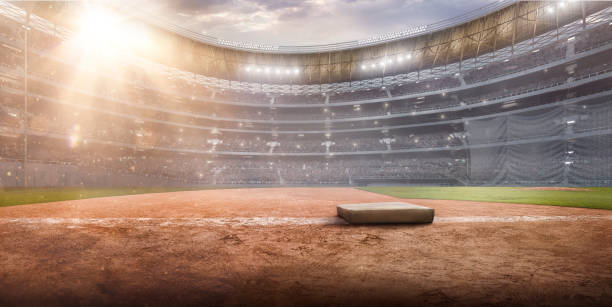
(III) Practical Applications in Sports Venues
Performance Monitoring and Optimization:
Lighting Quality Metrics: Track metrics such as illuminance levels, color rendering index (CRI), and flicker index to ensure compliance with lighting standards and regulations.
Dynamic Adjustment Strategies: Analyze real-time data to adjust lighting parameters dynamically based on game conditions, broadcast requirements, and user preferences to optimize performance and visual comfort.
Energy Management and Sustainability:
Usage Profiling: Monitor energy consumption patterns across different areas of the venue to identify opportunities for efficiency improvements and behavior modifications.
Energy Benchmarking: Compare energy usage against historical data, industry benchmarks, and performance targets to set goals and measure progress toward sustainability initiatives.
Maintenance Planning and Lifecycle Management:
Fault Detection and Diagnostics: Utilize data analytics to detect anomalies, identify performance degradation, and diagnose issues with lighting fixtures and components.
Predictive Maintenance: Implement predictive maintenance strategies based on predictive analytics to anticipate equipment failures, schedule repairs, and minimize downtime.
(IV) Integration with Smart Systems and IoT
Data Integration and Visualization:
Integrate lighting data with other smart systems, building management systems (BMS), and IoT platforms to create holistic views of venue operations and performance.
Visualize data through dashboards, reports, and interactive tools to facilitate decision-making, performance tracking, and trend analysis.
Machine Learning and AI:
Apply machine learning algorithms and artificial intelligence (AI) techniques to analyze large datasets, uncover patterns, correlations, and anomalies, and derive actionable insights.
Use AI-driven optimization algorithms to continuously improve lighting performance, energy efficiency, and operational reliability based on real-time data feedback.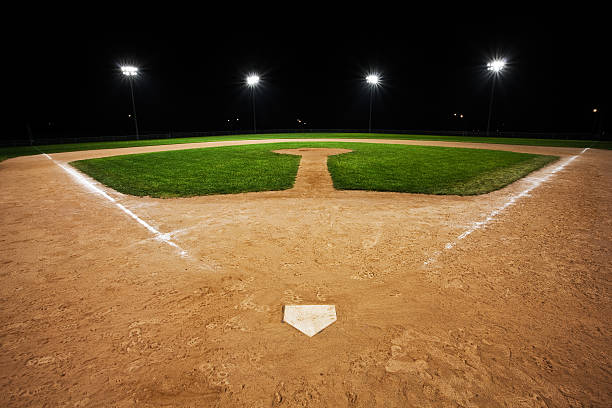 (V) Conclusion
(V) Conclusion
Data collection and analytics play a crucial role in optimizing the performance, efficiency, and sustainability of LED lighting in sports venues. By leveraging sensor technology, IoT connectivity, and advanced analytics tools, venues can gain valuable insights into lighting operations, energy usage, and maintenance needs. Integration with smart systems and IoT platforms further enhances control, visibility, and decision-making capabilities, positioning data-driven lighting analytics as a cornerstone of modern sports venue management and operations.
IV. Impact on Player Performance
A. Enhanced Visibility
1. Improved reaction times
(1) Introduction to Reaction Times in Sports
Definition:
Reaction time refers to the duration between the onset of a stimulus and the initiation of a response. In sports, it is critical for players’ performance as it affects their ability to respond swiftly to dynamic and unpredictable events.
Enhanced lighting conditions can significantly improve athletes’ visual acuity and response times, leading to better performance.
Importance in Sports:
Fast reaction times are crucial in sports for actions such as catching a ball, responding to opponents’ movements, and making quick decisions.
Improved visibility and reduced visual strain contribute to faster and more accurate reactions.
(II) Role of LED Lighting in Enhancing Reaction Times
Superior Illumination Quality:
Brightness and Uniformity: LED lighting provides bright, uniform illumination across the playing surface, eliminating shadows and dark spots that can delay reaction times.
High Color Rendering Index (CRI): LEDs with high CRI improve color perception, allowing players to distinguish objects and movements more clearly and quickly.
Reduced Flicker and Glare:
Flicker-Free Technology: Unlike some traditional lighting, LED lights are designed to operate without flicker, which reduces eye strain and fatigue, thereby enhancing players’ visual processing speed.
Anti-Glare Features: Modern LED lighting systems are equipped with anti-glare features, which minimize visual discomfort and distractions, helping athletes maintain focus and react promptly.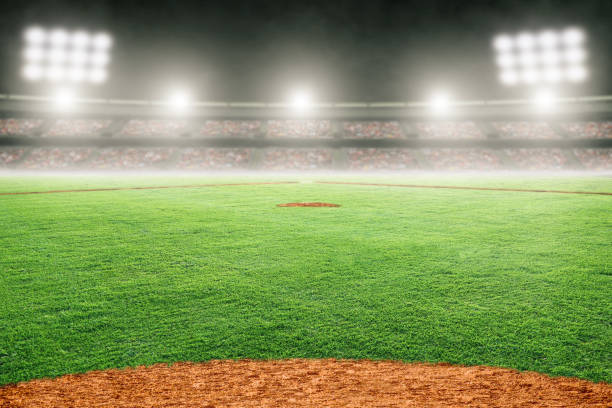 Adaptive Lighting:
Adaptive Lighting:
Dynamic Adjustments: LED systems can dynamically adjust brightness and color temperature to match changing conditions, such as different times of day or varying weather conditions, ensuring consistent visibility and optimal performance.
Programmable Scenarios: Specific lighting scenarios can be programmed for different sports, enhancing the visual environment to suit the specific demands of each activity.
(III) Practical Applications and Benefits
Indoor and Outdoor Venues:
Indoor Arenas: Uniform, bright LED lighting eliminates shadows and dark spots, crucial for fast-paced indoor sports like basketball and volleyball.
Outdoor Stadiums: High-powered LEDs ensure consistent illumination even in large, open spaces, benefiting sports such as soccer, football, and baseball.
Training and Practice:
Enhanced Training: Improved lighting conditions enable athletes to train more effectively, allowing for better practice sessions and skill development.
Reduced Injury Risk: Better visibility reduces the likelihood of accidents and injuries caused by poor lighting, contributing to safer training environments.
Competitive Advantage:
Improved Performance: Faster reaction times directly translate to better performance in competitive settings, giving athletes and teams an edge over opponents.
Broadcast Quality: Superior lighting enhances the quality of broadcasts, ensuring that spectators and viewers at home have a clear view of the action, further supporting the sport’s growth and popularity.
(IV) Supporting Studies and Evidence
Research Findings:
Studies have shown that improved lighting conditions, particularly those provided by high-quality LED systems, significantly enhance visual acuity and reaction times in athletes.
Research comparing traditional lighting systems (such as metal halide and fluorescent) with modern LED lighting consistently demonstrates the superiority of LEDs in terms of brightness, uniformity, and reduced glare.
Case Studies:
Professional Venues: Numerous professional sports venues have transitioned to LED lighting, reporting improved player performance, reduced energy costs, and enhanced spectator experience.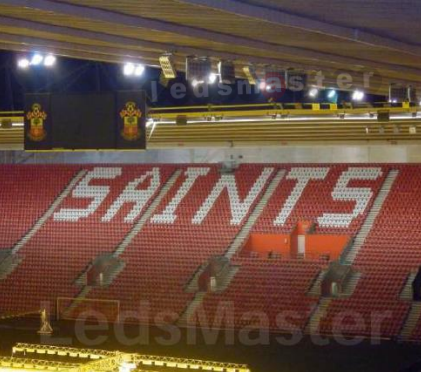 Amateur and Community Sports: Local sports facilities that have upgraded to LED lighting also report similar benefits, highlighting the broad applicability of these advantages.
Amateur and Community Sports: Local sports facilities that have upgraded to LED lighting also report similar benefits, highlighting the broad applicability of these advantages.
(V) Conclusion
LED sports lighting plays a crucial role in enhancing players’ reaction times by providing superior illumination quality, reducing flicker and glare, and enabling adaptive lighting conditions. These improvements contribute to better performance, reduced injury risks, and a competitive advantage for athletes. As sports venues continue to adopt and optimize LED lighting systems, the positive impact on reaction times and overall athletic performance becomes increasingly evident.
2. Better ball tracking and play execution
(1) Introduction to Ball Tracking and Play Execution
Definition:
Ball Tracking: The ability of players and officials to follow the ball’s trajectory and movement accurately during a game.
Play Execution: The successful implementation of game strategies and actions, heavily reliant on players’ visual perception and reaction times.
Importance in Sports:
Accurate ball tracking is crucial for players to anticipate and react to plays, impacting their performance and decision-making.
Effective play execution depends on clear visibility of the playing field, teammates, opponents, and the ball.
(II) Role of LED Lighting in Enhancing Ball Tracking and Play Execution
Enhanced Visibility:
High Luminosity: LED lighting systems provide high-intensity illumination that ensures the entire playing field is well-lit, reducing shadows and dark spots where the ball might be lost.
Uniform Lighting: Consistent light distribution across the field eliminates areas of uneven illumination, helping players maintain clear sightlines.
Superior Color Rendering:
High Color Rendering Index (CRI): LEDs with a high CRI (typically above 80) render colors more accurately, which helps players and officials distinguish the ball, players’ uniforms, and field markings better.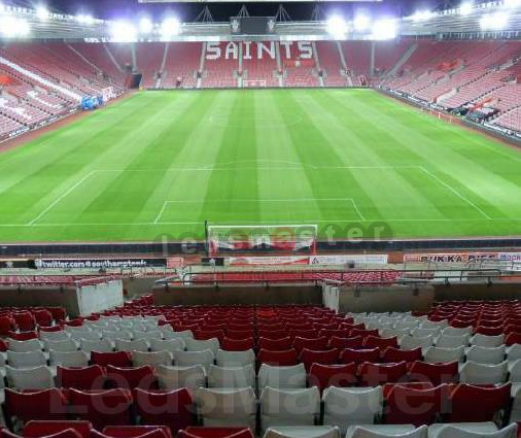 Improved Contrast: Enhanced color contrast under LED lighting makes it easier to track the ball against different backgrounds and amidst fast-paced action.
Improved Contrast: Enhanced color contrast under LED lighting makes it easier to track the ball against different backgrounds and amidst fast-paced action.
Reduced Glare and Flicker:
Anti-Glare Technology: Modern LED fixtures are designed to minimize glare, which can distract players and impede their ability to see clearly.
Flicker-Free Operation: LEDs operate without flicker, reducing eye strain and improving visual comfort for both players and spectators, enhancing their ability to track the ball.
(III) Practical Applications and Benefits
Player Performance:
Accurate Ball Tracking: With better visibility and color rendering, players can track the ball’s movement more precisely, leading to improved passing, catching, and shooting accuracy.
Enhanced Play Execution: Clear and consistent lighting helps players execute plays more effectively by providing a better visual environment for strategic movements and positioning.
Officiating and Spectator Experience:
Improved Officiating: Referees and officials benefit from better visibility, leading to more accurate calls and a fairer game.
Enhanced Viewing Experience: Spectators, both in-stadium and watching broadcasts, enjoy a clearer view of the action, making games more engaging and enjoyable.
Training and Development:
Better Practice Conditions: Consistent and high-quality lighting during training sessions helps players develop their skills more effectively.
Visual Training: Improved lighting conditions support visual training exercises, helping athletes enhance their visual tracking and coordination abilities.
(IV) Case Studies and Evidence
Professional Sports Venues:
Stadium Upgrades: Many professional sports venues have upgraded to LED lighting systems, reporting significant improvements in ball tracking and overall play execution.
Player Feedback: Athletes often cite better visibility and reduced glare as key benefits of LED lighting, contributing to enhanced performance and fewer visual distractions.
Research Findings:
Studies have shown that LED lighting, compared to traditional lighting systems (e.g., metal halide, fluorescent), provides superior illumination quality that enhances visual performance in sports contexts.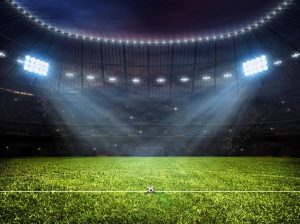 Research on visual acuity and reaction times under different lighting conditions consistently highlights the advantages of LEDs in improving players’ ability to track the ball and execute plays.
Research on visual acuity and reaction times under different lighting conditions consistently highlights the advantages of LEDs in improving players’ ability to track the ball and execute plays.
(V) Conclusion
LED sports lighting significantly enhances ball tracking and play execution by providing superior illumination quality, high color rendering, and reduced glare and flicker. These improvements contribute to better player performance, more accurate officiating, and an enhanced spectator experience. As sports venues continue to adopt advanced LED lighting systems, the positive impact on the quality of play and the overall game experience becomes increasingly evident, benefiting athletes, officials, and fans alike.
B. Reduced Eye Strain
1. Consistent and flicker-free lighting
(I) Introduction to Consistent and Flicker-Free Lighting
Definition:
Consistent Lighting: Illumination that is uniform across the entire playing surface, without variations in brightness or color.
Flicker-Free Lighting: Lighting that operates without perceptible fluctuations in brightness, which can cause visual discomfort and affect performance.
Importance in Sports:
Consistent lighting ensures that all areas of the playing field are equally visible, eliminating shadows and enhancing visibility for players, officials, and spectators.
Flicker-free lighting reduces eye strain, improves visual comfort, and ensures smooth viewing experiences, crucial for both athletes and audiences.
(II) Role of LED Technology in Providing Consistent and Flicker-Free Lighting
Advanced Engineering and Design:
Stable Light Output: LED lights are designed to provide a stable and consistent light output, maintaining uniform brightness and color temperature across the field.
Precision Optics: LEDs utilize advanced optics to distribute light evenly, preventing hotspots and dark areas that can disrupt gameplay and viewing.
Elimination of Flicker:
High-Quality Drivers: LED lighting systems are equipped with high-quality electronic drivers that ensure a constant current supply, eliminating the flicker often associated with traditional lighting sources. Digital Dimming: LEDs support smooth, digital dimming capabilities that avoid the flicker caused by analog dimming techniques, ensuring a seamless lighting experience.
Digital Dimming: LEDs support smooth, digital dimming capabilities that avoid the flicker caused by analog dimming techniques, ensuring a seamless lighting experience.
Adaptive Control Systems:
Real-Time Adjustments: Integrated sensors and control systems allow LED lights to adjust in real-time to maintain consistent lighting conditions, even as external factors change (e.g., natural light levels, weather conditions).
Programmable Scenarios: Lighting scenarios can be programmed to ensure optimal conditions for different events, maintaining consistent quality regardless of the activity.
(III) Practical Applications and Benefits
Player Performance:
Enhanced Visibility: Consistent lighting ensures that players have clear visibility of the entire playing area, which is critical for tracking the ball, positioning, and executing plays.
Reduced Eye Strain: Flicker-free lighting minimizes visual fatigue, allowing players to maintain focus and perform at their best for longer periods.
Officiating and Spectator Experience:
Accurate Officiating: Uniform and flicker-free lighting enables officials to see the action clearly, making accurate decisions and reducing the likelihood of errors.
Improved Broadcast Quality: Flicker-free lighting enhances the quality of televised broadcasts, providing clear, stable visuals for viewers at home and reducing motion artifacts that can occur with flickering lights.
(To Be Continued)

